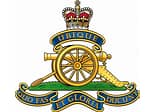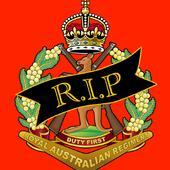An award-winning essay by an RAAF corporal lays out the significant challenges posed by commercially available drones in the military sphere.
One of the most significant shifts in modern warfare has been the rise of commercial, off-the-shelf (COTS) drones. These inexpensive, readily available systems have transformed battlefields from Ukraine to the Middle East, posing new threats that military forces around the world must address. Corporal Ryan Hodson, in his essay for the Air Force Writing Competition, highlights the profound implications these drones hold for the Royal Australian Air Force (RAAF) and broader defence strategies.
The COTS Drone Threat
While larger, military-grade drones have captured attention for their capabilities, it’s the smaller, commercial drones that are making a particularly game-changing impact. Sold for civilian use, these drones are fast, agile, and can be easily weaponized. Corporal Hodson’s essay, titled The Weaponisation of Toys and Implications for the Air Force, delves into the real-world challenges these drones pose to defence forces.
One of the most alarming aspects of COTS drones is their speed. Even hobbyist drones can reach speeds of up to 80 km/h, while racing drones can exceed 120 km/h. Despite their small size, these drones pose a ballistic threat, simply due to their velocity. When paired with weapons such as an RPG warhead, their versatility becomes clear—they can approach targets quickly and silently, avoiding detection by traditional methods. Unlike conventional anti-tank missiles, drones do not emit an infrared (IR) plume, meaning they can strike from above with little warning.
Detection and Countermeasures
One of the most significant challenges posed by COTS drones is their detection. Unlike military drones, which often have distinctive features, commercial drones come in a variety of shapes and sizes. Their small size and ability to manoeuvre through urban environments make them difficult to detect using traditional radar systems. This has forced militaries to consider integrating a combination of optical, thermal, and acoustic sensors to improve detection accuracy.
However, as Hodson explains, integrating these systems creates another problem—more data is added to the decision-making loop, which can slow response times. Furthermore, the interconnected nature of these detection platforms exposes new vulnerabilities. By linking sensors to central nodes for real-time data sharing, the risk of cyberattacks increases. In essence, these drones not only pose a physical threat but also become a vector for cyber warfare, expanding the attack surface for adversaries.
Counter-Drone Operations and Complications
Countering drones is more complex than it seems. While jamming systems may disable enemy drones, they can also disrupt friendly forces’ operations. This “fratricide” has been observed in the Ukraine conflict, where jamming efforts have impacted both enemy and allied drones, as well as critical radar and communication systems. In urban areas, jamming signals can inadvertently affect civilian infrastructure, such as GPS systems used by commercial air traffic.
More aggressive, hard-kill options, like close-in weapon systems (CIWS), present their own challenges. While they may effectively neutralize a drone, using such force in civilian areas could cause collateral damage, making them unsuitable in many situations.
The Need for Education and Speed
Trust is another key factor when dealing with the drone threat. With the speed at which drones can approach a target and the challenges of positively identifying whether a drone is a threat, military personnel must be well-trained to respond appropriately. For Hodson, education is essential to help pilots and operators understand how detection systems work and how to counter drone threats quickly and effectively.
The speed of innovation is a crucial point that Hodson raises. Not only are drones themselves fast, but the technology behind them is evolving rapidly. Defence forces must keep up with this pace to ensure they can adapt to new challenges and remain effective.
Navigating Legal and Operational Challenges
One of the trickiest aspects of COTS drone warfare is the overlap between civilian and military use. Drones already present problems in restricted airspaces, often due to hobbyists flying too close to sensitive areas. This raises difficult questions—how does one differentiate between an innocent mistake and a deliberate threat? Additionally, the increasing use of 5G and 6G networks complicates matters further, as these congested spectrums must now accommodate both civilian and military uses.
Hodson warns that while the threat of COTS drones is not immediate, it is significant. Drones have already been used to complement first strikes, as seen in Hamas’ use of them to overwhelm air defences. While they may not represent a complete paradigm shift, drones are nonetheless an evolving threat that demands attention.
Conclusion
CPL Hodson’s essay underscores the growing need for the RAAF and other defence organizations to recognize the implications of commercial drone technology. As drones become more accessible and versatile, defence forces must adapt their strategies to detect, counter, and defend against them. By educating personnel, investing in advanced detection systems, and addressing the legal and operational challenges posed by COTS drones, militaries can better prepare for the future of warfare.
You can read the full Corporal Margaret Clarke Award-winning essay, The Weaponisation of Toys and Implications for the Air Force, here.










